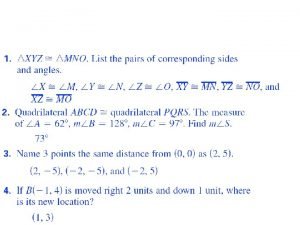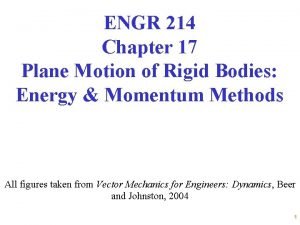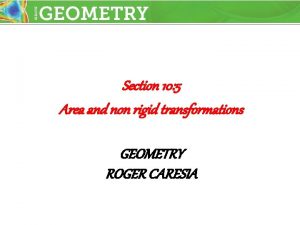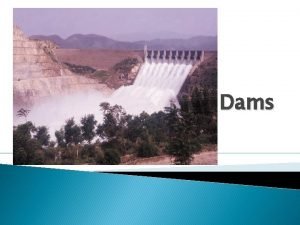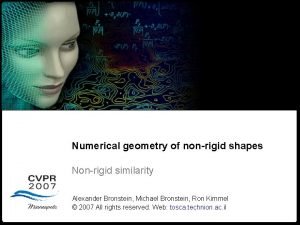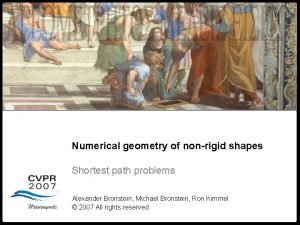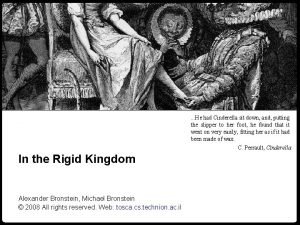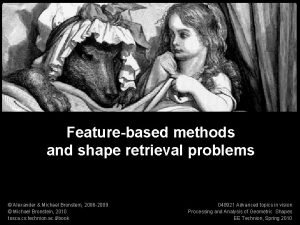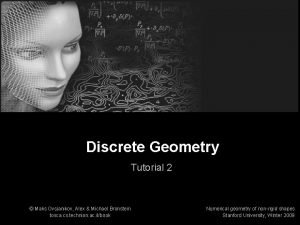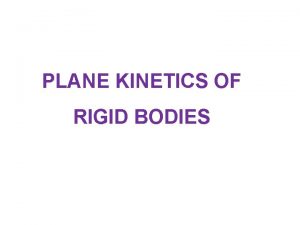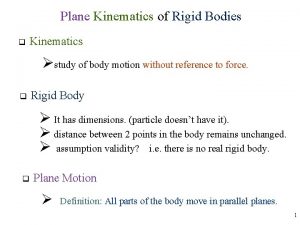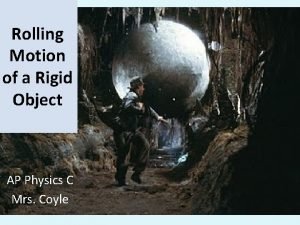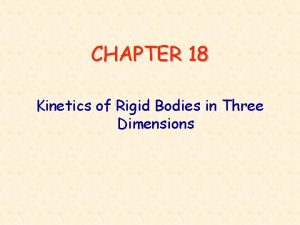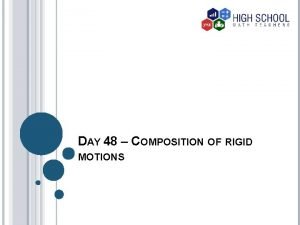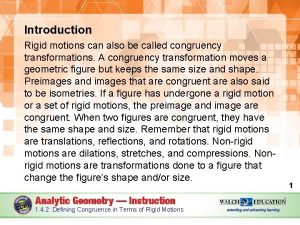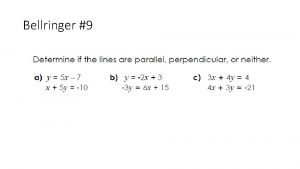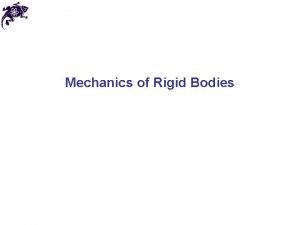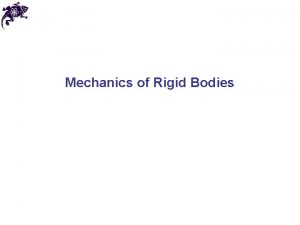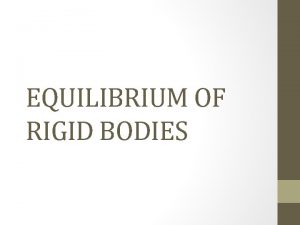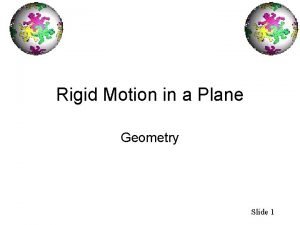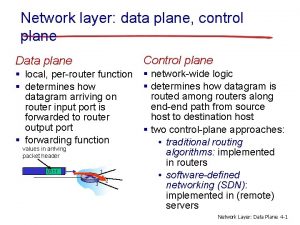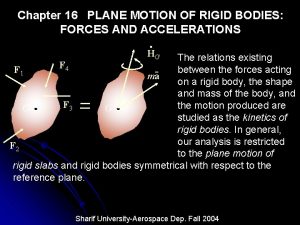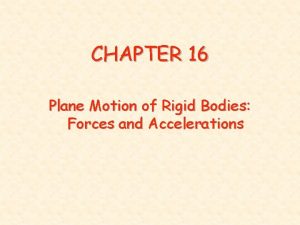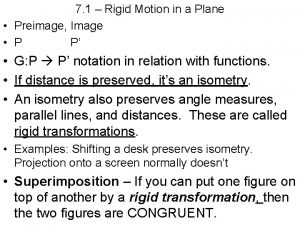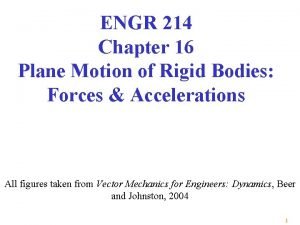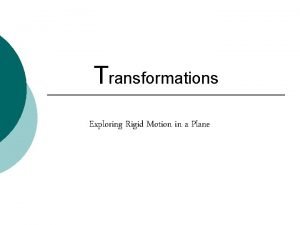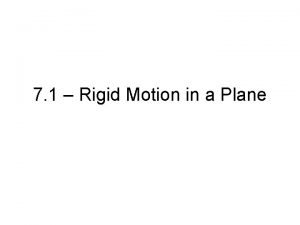7 1 Rigid Motion in a Plane Geometry

















- Slides: 17

7. 1 Rigid Motion in a Plane Geometry Mr. Qayumi 2010 Slide 1

Standard/Objectives Standard: • Students will understand geometric concepts and applications. Performance Standard: • Describe the effect of rigid motions on figures in the coordinate plane and space that include rotations, translations, and reflections Objective: • Identify the three basic rigid transformations. Slide 2

Assignments • Chapter 7 Definitions ( Will post online) • p. 399 – 401 #’s 1 - 31, 33 -39 Slide 3

Transformations Vocabulary • The new figures is called the IMAGE. • The original figures is called the PREIMAGE. • The operation that MAPS, or moves the PREIMAGE onto the image is called a TRANSFORMATION. Slide 4

What will you learn? • Three basic transformations: 1. 2. 3. 4. • Reflections Rotations Translations And combinations of the three. For each of the three transformations on the next slide, the blue figure is the preimage and the red figure is the image. We will use this color convention throughout the rest of the book. Slide 5

Three Transformations: Rotation about a point Reflection in a line Translation Slide 6

Some facts • Some transformations involve labels. When you name an image, take the corresponding point of the preimage and add a prime symbol. For instance, if the preimage is A, then the image is A’, read as “A prime. ” Slide 7

Example 1: Naming transformations • Use the graph of the transformation at the right. a. Name and describe the transformation. b. Name the coordinates of the vertices of the image. c. Is ∆ABC congruent to its image? How can you prove it? Slide 8

Example 1: Naming transformations a. Name and describe the transformation. The transformation is a reflection in the yaxis. The image was obtained by flipping ∆ABC over the y-axis/ Slide 9

Example 1: Naming transformations b. Name the coordinates of the vertices of the image. The cordinates of the vertices of the image, ∆A’B’C’, are A’(4, 1), B’(3, 5), and C’(1, 1). Slide 10

Example 1: Naming transformations c. Is ∆ABC congruent to its image? Yes ∆ABC is congruent to its image ∆A’B’C’. One way to show this would be to use the DISTANCE FORMULA to find the lengths of the sides of both triangles. Then use the SSS Congruence Postulate Slide 11

ISOMETRY • An ISOMETRY is a transformation that preserves lengths. Isometries also preserve angle measures, parallel lines, and distances between points. Transformations that are isometries are called RIGID TRANSFORMATIONS. Slide 12

Ex. 2: Identifying Isometries • Is this an Isometry? • This transformation appears to be an isometry. The blue parallelogram is reflected in a line to produce a congruent red parallelogram. Slide 13

Ex. 2: Identifying Isometries • Is this an Isometry? • This transformation is not an ISOMETRY because the image is not congruent to the preimage Slide 14

Mappings • You can describe the transformation in the diagram by writing “∆ABC is mapped onto ∆DEF. ” You can also use arrow notation as follows: – ∆ABC • Implies mapped onto ∆DEF The order in which the vertices are listed specifies the correspondence. Either of the descriptions implies that A D, B E, and C F. Slide 15

Ex. 3: Preserving Length and Angle Measures • In the diagram ∆PQR is mapped onto ∆XYZ. The mapping is a rotation. Given that ∆PQR ∆XYZ is an isometry, find the length of XY and the measure of Z. 35° Slide 16

Ex. 3: Preserving Length and Angle Measures • SOLUTION: • The statement “∆PQR is mapped onto ∆XYZ” implies that P X, Q Y, and R Z. Because the transformation is an isometry, the two triangles are congruent. So, XY = PQ = 3 and m Z = m R = 35° Slide 17
 Rigid motion in geometry
Rigid motion in geometry Plane motion of rigid bodies: energy and momentum methods
Plane motion of rigid bodies: energy and momentum methods Data plane control plane and management plane
Data plane control plane and management plane 10-5 area and nonrigid transformations
10-5 area and nonrigid transformations Rigid and non rigid dams
Rigid and non rigid dams What is rigid and non rigid
What is rigid and non rigid Non rigid
Non rigid Numerical geometry of non-rigid shapes
Numerical geometry of non-rigid shapes Numerical geometry of non-rigid shapes
Numerical geometry of non-rigid shapes Non rigid
Non rigid Numerical geometry of non-rigid shapes
Numerical geometry of non-rigid shapes Planar kinetics of a rigid body
Planar kinetics of a rigid body Iczv
Iczv Rolling motion of a rigid object
Rolling motion of a rigid object Rigid body kinetics
Rigid body kinetics Composition of rigid motion
Composition of rigid motion Introduction rigid motion or isometry
Introduction rigid motion or isometry Rigid motion definition
Rigid motion definition
